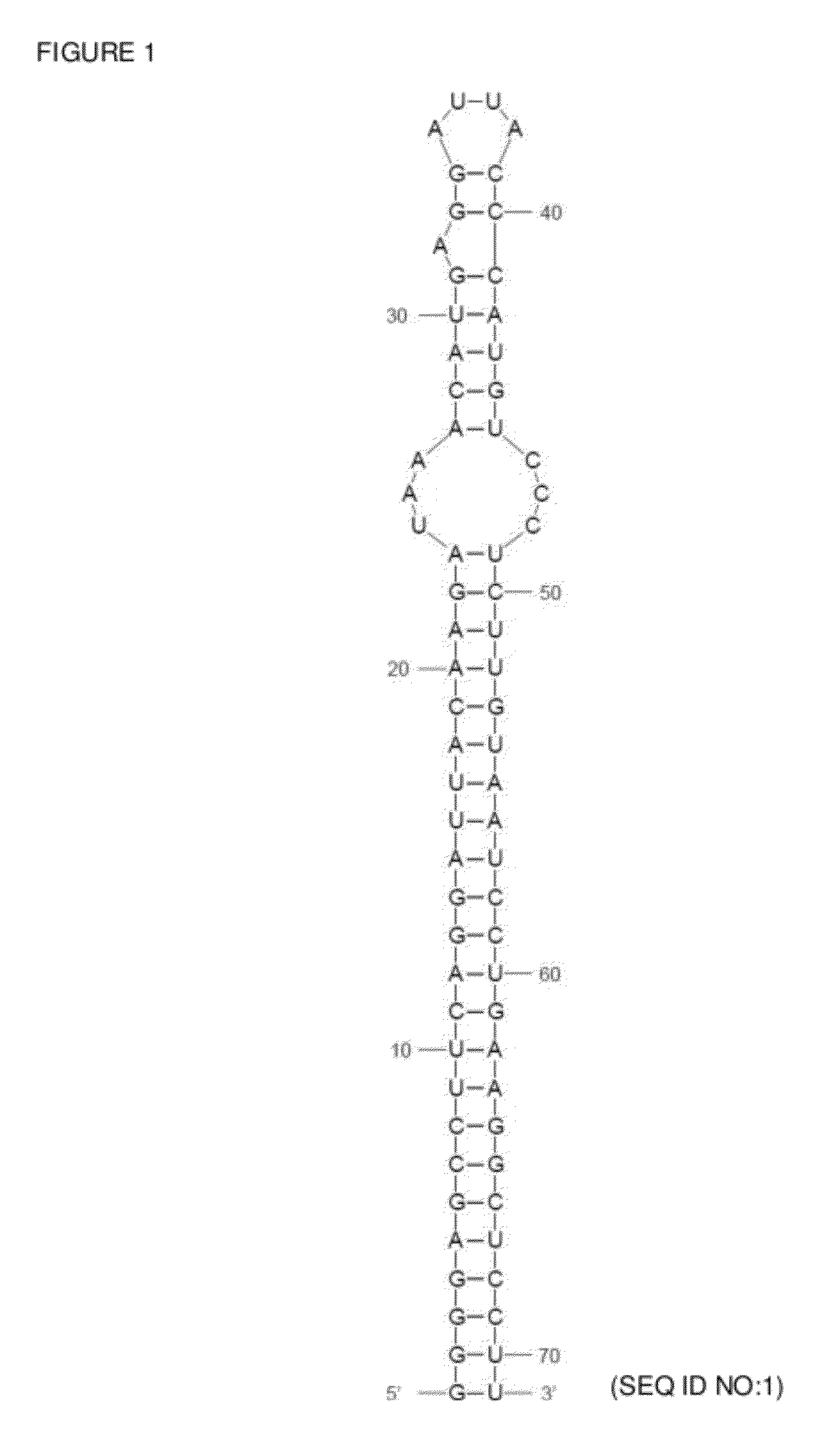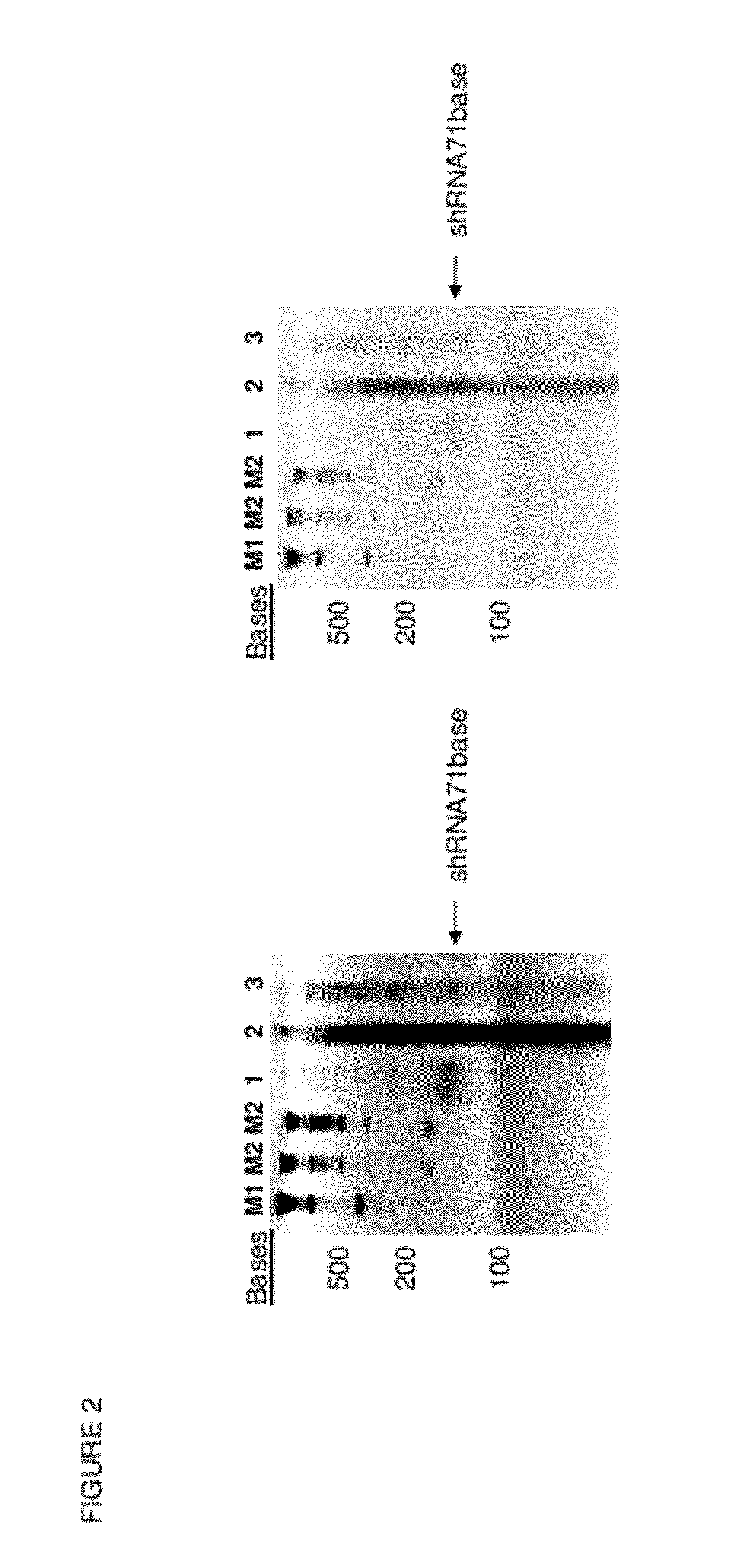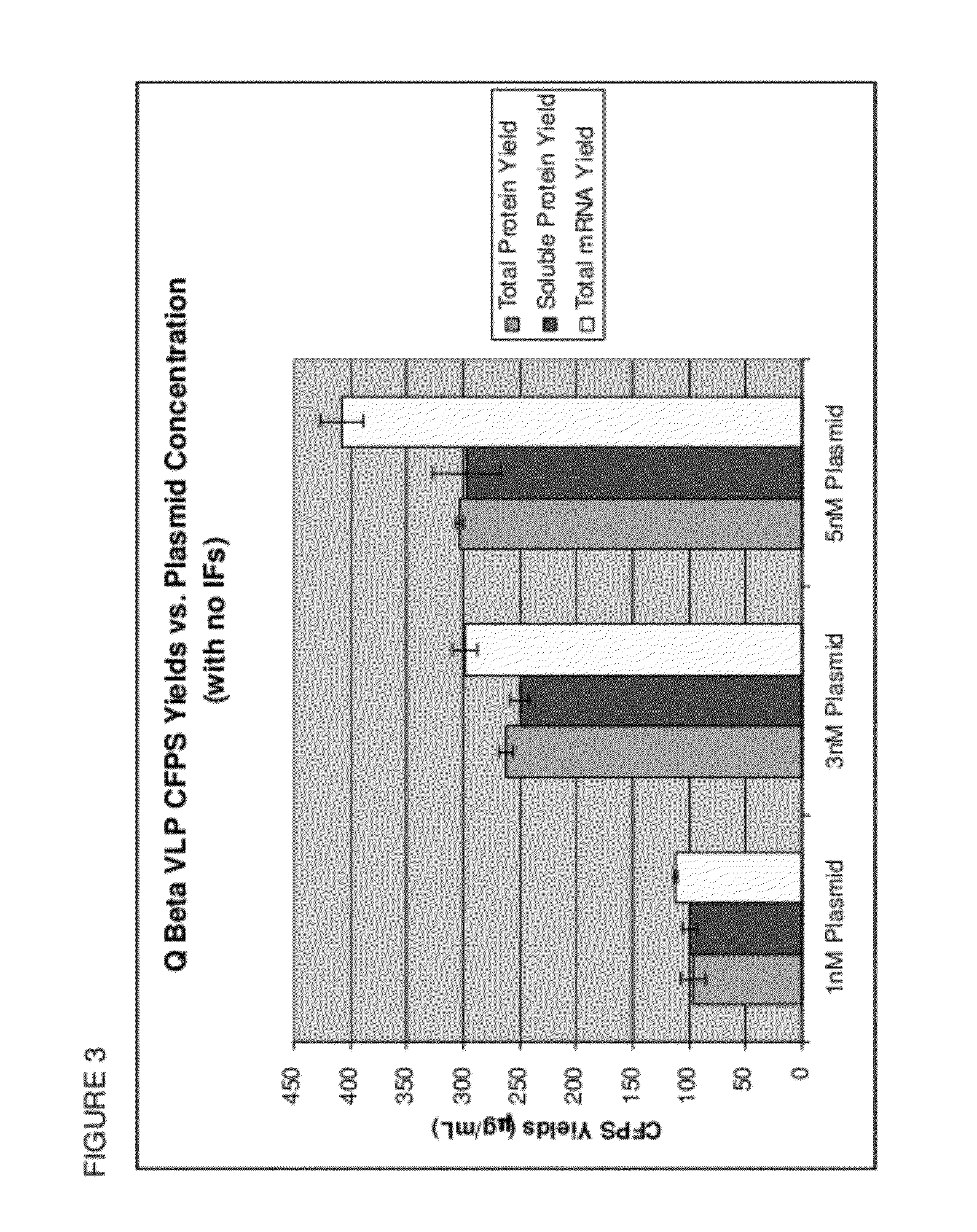Encapsidation of heterologous entities into virus-like particles
a technology of heterologous entities and viruslike particles, which is applied in the direction of drug compositions, peptide/protein ingredients, extracellular fluid disorder, etc., can solve the problems of extremely low yield in eukaryotic cell-free systems, and achieve the effect of reducing the level of plasmid dna and increasing translation efficiency
- Summary
- Abstract
- Description
- Claims
- Application Information
AI Technical Summary
Benefits of technology
Problems solved by technology
Method used
Image
Examples
example 1
[0071]We have demonstrated the encapsidation of exogenous nucleic acid in MS2 VLPs produced using cell-free protein syntheses. The MS2 RNA pac sequence attached to a fluorophore (single-stranded O-methyl RNA of sequence 5′-ACAUGAGGAUUACCCAUGU-3′ (SEQ ID NO:3) with 6-FAM™ at the 5′ end synthesized by Integrated DNA technologies, inc. Coralville, Iowa) was added directly to the PANOxSP cell-free reaction at time points 0, 15, 30 and 45 minutes increasing the concentration by 9.1 μM each time. By sucrose gradient velocity sedimentation, it was determined that 68% assembly into VLPs occurred and 239 μg / mL of MS2 coat protein was produced. A Mithras LB 940 fluorometer (Berthold Technologies LLC, Oak Ridge, Tenn.) was used to determine the amount of RNA-fluorophore incorporated into the VLP as compared to a linear concentration gradient of the RNA-fluorophore. An average of 2.2 RNA-fluorophores were encapsidated into each MS2 VLP. Other procedures including cell-free reaction conditions a...
example 2
[0072]We have also demonstrated encapsidation of shRNA into virus-like particles produced using cell-free protein synthesis. A firefly luciferase shRNA was extended to contain the MS2 packaging sequence (MS2 bacteriophage TR (translational operator) RNA sequence which serves as a pac sequence for the virus).
[0073]This shRNA-MS2TR RNA sequence as shown in FIG. 1 was synthesized in an in vitro transcription reaction at 37° C. which was identical to the PANOxSP cell-free reaction described previously except E. coli extract and plasmid DNA were not added and the following components were added: 10 mM dithiothreitol, 1 U / uL RNAseOUT RNAse inhibitor (Qiagen, Germantown, Md.), 10 mM potassium phosphate, hybridized synthetic oligonucleotides as described below, and recombinant T7 RNA polymerase was increased 4-fold. As described previously (Gondai et al. (2008) Nucleic Acids Res 36(3):e18), the following synthetic oligonucleotides served as the template for the above transcription reaction ...
example 3
[0075]We have demonstrated that by supplementing a reaction described above with 8 μM of each initiation factor (IF1, IF2, and IF3) and by reducing the template plasmid concentration to 1 nM, we can reduce the encapsidation of mRNA produced during the course of cell free protein synthesis of the Q beta phage VLP and increase the encapsidation of exogenous cargo (desired nucleic acids or other cargo) in the Q beta phage VLP. In this example, DNA fused to a fluorophor was encapsidated.
[0076]The initiation factors were expressed using a T7 promoter as N-terminal hexa-histidine tagged (his-tag) proteins with a TEV protease cleavage site between the initiation factors (IFs) and the his-tag. The expression strain was BL21(DE3) E. coli. Expression was induced by 1 mM IPTG. After induction, the E. coli cells were harvested and lysed with a high pressure homogenizer. The IF his-tag fusion proteins were purified from the lysate using HisTrap columns (Manufactured by General Electric HealthCar...
PUM
| Property | Measurement | Unit |
|---|---|---|
| concentrations | aaaaa | aaaaa |
| concentrations | aaaaa | aaaaa |
| concentrations | aaaaa | aaaaa |
Abstract
Description
Claims
Application Information
 Login to View More
Login to View More - R&D
- Intellectual Property
- Life Sciences
- Materials
- Tech Scout
- Unparalleled Data Quality
- Higher Quality Content
- 60% Fewer Hallucinations
Browse by: Latest US Patents, China's latest patents, Technical Efficacy Thesaurus, Application Domain, Technology Topic, Popular Technical Reports.
© 2025 PatSnap. All rights reserved.Legal|Privacy policy|Modern Slavery Act Transparency Statement|Sitemap|About US| Contact US: help@patsnap.com



